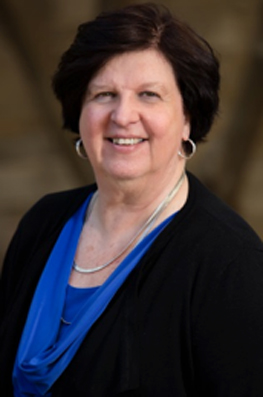In this series, David Lapidus talks with members of the Rare Collective to debunk common myths surrounding rare diseases. In this post, Jean Campbell talks about when orphan drug companies should begin interacting with the patient community.
David:
Jean, you practically invented the field of rare-disease patient advocacy, and today your PPALS program is dedicated to helping patient advocates become more effective supporters of drug development and access. Can you help us see, from the patient groups’ perspective, a myth that’s pervasive among drug developers?
Jean:
Pharma companies, especially if they’re new to orphan drugs, may think that they have some “alone time” to work independently before patient groups get involved. But that isn’t true anymore: patient groups will pick up any scrap of information about drug development and start asking questions about the issues that matter to them. If a pharma company doesn’t engage with patients early on, they could find themselves blindsided by questions that are actually dominating the community’s concerns.
David:
That sounds like a nasty surprise. Can you tell us about an issue that catches companies off-guard when patients bring it up?
Jean:
Companies that are new to orphan drugs are sometimes shocked by how quickly patients raise questions about price. We’re at this stage now for two reasons. First, the pharma industry has gotten a lot of bad publicity around certain pricing practices—so patients are aware of the issue. And second, the payors are using strategies that shift some of that burden onto the patients—so patients are afraid that they’ll be the ones to pick up the pieces. Patients will be concerned about access almost as soon as they learn about a new therapy. After all, what good is it if patients can’t use it?
David:
Pricing strategy seems like a pretty advanced topic for an early-stage company to worry about. What’s a reasonable way for them to address patient concerns if the company itself hasn’t developed a strategy yet?
Jean:
There are two answers here. First, develop that strategy before you talk to patients! It doesn’t have to be implemented, or even completely designed. But these days, there’s no excuse for letting patients fear that they won’t have access to the therapy. To be credible, you need to understand what the options are, even if you haven’t picked one yet. This means knowing how your therapy could be viewed by insurers, Medicaid, or Medicare. It also means thinking about your Patient Assistance Program (PAP). A PAP can take lots of different forms: non-profit versus for-profit, copay assistance versus free drug, internal versus external. There’s no universal template for this, which is why I help companies navigate their choices. Maybe you’re not ready to decide which one is right for your company, but you do want to speak the language so you can help patients think about what these approaches mean for them.
Second, it’s important to understand how to tell patients “I don’t know what the price will be.” That’s a perfectly good answer, but you have to deliver it in the right way so that patients understand that you’re working on it, and you’ll eventually get to a solution that addresses their concerns.
David:
That sounds like it could take a lot of time and effort. At what stage of development should a company be working on these questions?
Jean:
An experienced orphan drug company will often call me in during phase 1. The truly forward-thinking ones’ work on it before they reach the clinic. It can take about a year to develop a PAP program, if you’re starting from scratch and lack internal expertise. For a complicated program, it can even take two years. We have to do a landscape to assess the options, reach an internal consensus, and start interviewing potential partners. If the company decides to run the PAP internally, we’ll have to build firewalls to separate it from the commercial organization. And that’s just for the United States! Each European country will have its own issues around price and access. The stakes can be even higher than in the US, because a payor’s negative decision affects an entire country of patients. These are huge challenges for any company to deal with, and my clients understand the value of their patients’ support.
David:
So the execution can take up to two years, if it’s your first time around. How long should a company allow just to get itself educated enough to have a smart conversation with patients?
Jean:
In my experience, that takes 3-6 months. Then the company might be ready to get feedback from the patient community. But remember, it’s a lot harder if the patients aren’t organized. For example, if they’re a social media community instead of a structured charitable organization, it will take a lot more time.
David:
We’ve talked a lot about price, but what are the other topics where patients might offer input—before the company expects it?
Jean:
Patients care a lot about endpoints. That’s what defines their experience of the disease. A company must balance what patients want, what regulators demand, and what the science is able to demonstrate. The patients can be your allies in this process, if they feel like you understand what matters to them, and if they understand why you’re doing things in a particular way.
David:
We’ve discussed when to talk to patients. What about how to talk to them?
Jean:
When I work with companies, I advise them to be conservative. Don’t raise expectations if you can’t guarantee that you’ll meet them. Again, it’s OK to tell the patients “I don’t know” if they ask a question that you haven’t figured out yet. But you do want to help them understand why the question can’t be answered yet. Maybe the price will depend on certain clinical factors that are still unknown. You certainly don’t want to promise efficacy before it’s been demonstrated in your trial. Even the timing of major events, like trial enrollment, is often uncertain. Save your optimism for your colleagues—if it spreads to the patient community, it can become a liability later. So, it’s never too early to address these topics, but always do so in a way that respects the patients’ concerns without overpromising your ability to address those concerns.

Jean Campbell is the Founder of JF Campbell Consultants and a nationally recognized advocate for patients with rare diseases.



 RARE COLLECTIVE® is a trademark of Rare Collective, LLC.
RARE COLLECTIVE® is a trademark of Rare Collective, LLC. 